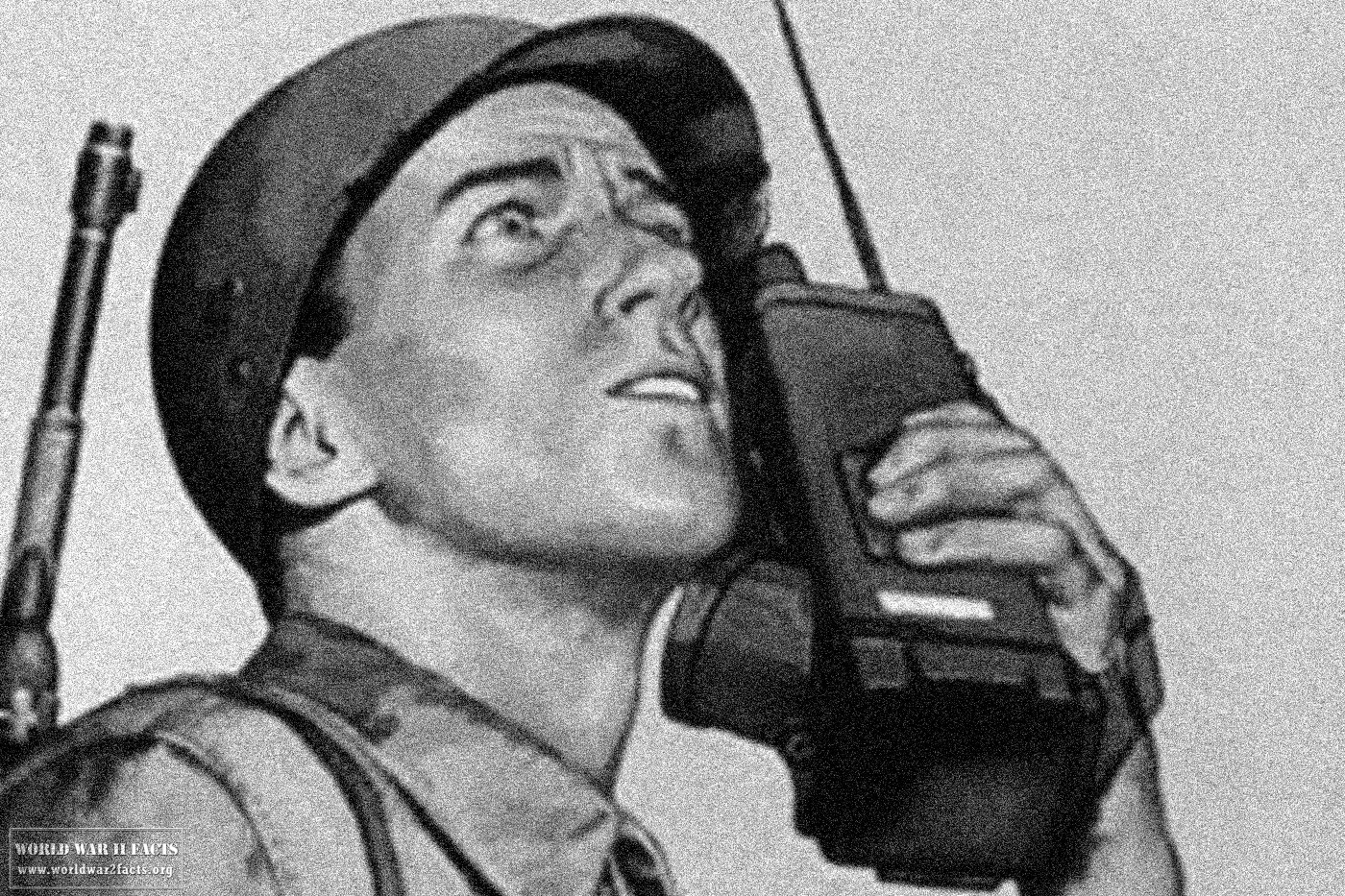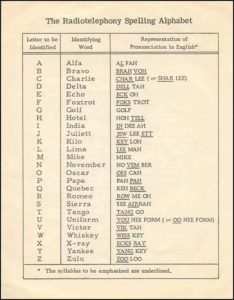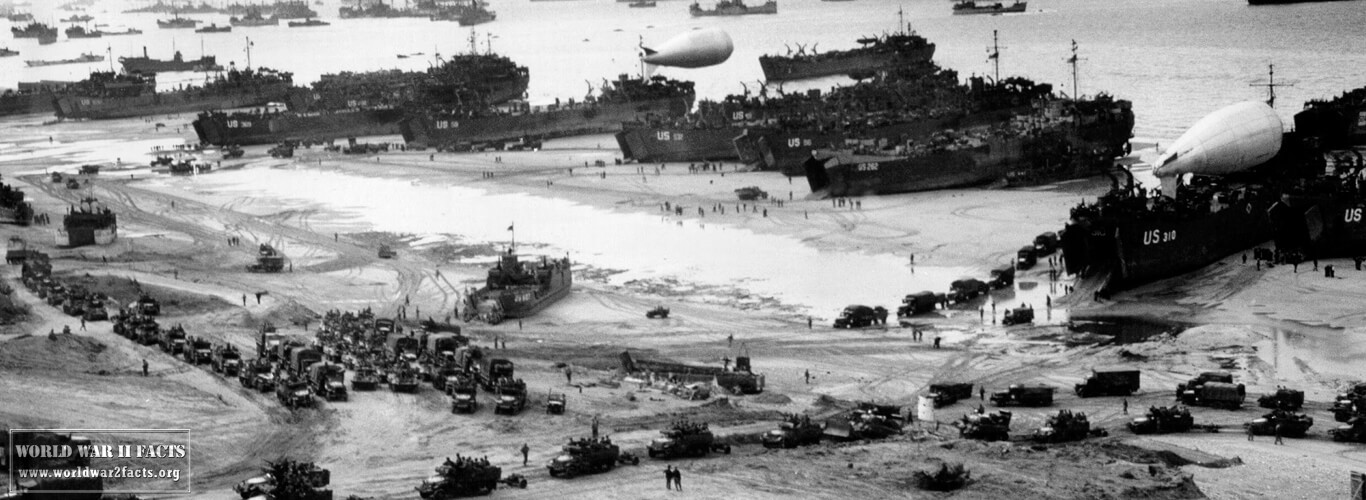Military Alphabet of World War 2

The military alphabet of World War 2, which is more commonly known as the NATO standard military alphabet today, is a means to pronounce the English language alphabet in a manner to ensure clarity during voice transmission over radio telephone. During World War 2, English speaking militaries such as the United States and the United Kingdom used the alphabet while transmitting clear and encoded voice transmissions. At the time, the military alphabet was more commonly referred to as the radio-telephony spelling alphabet.
Origins of the Military WW2 Alphabet
Contents
The first international alphabet system (or pronunciation system) was first adopted in 1927 by the ITU (International Telecommunication Union). From this point forward, the alphabet would undergo a number of revisions and would ultimately be adopted by ICAN (International Commission for Air Navigation) and the ICAO (International Civil Aviation Organization) to the Second World War. The UK and UK militaries would use the pure “phonetic” military alphabets until the NATO military standard was adopted.
Below is the currently published NATO military alphabet that was adopted from the ICAO version of pronunciation.
The NATO Standard Military Alphabet
This chart shows the current NATO standard military alphabet (based on the ICAO alphabet from WW2):

|
Letter |
NATO |
|
A |
Alpha |
|
B |
Bravo |
|
C |
Charlie |
|
D |
Delta |
|
E |
Echo |
|
F |
Foxtrot |
|
G |
Golf |
|
H |
Hotel |
|
I |
India |
|
J |
Juliet |
|
K |
Kilo |
|
L |
Lima |
|
M |
Mike |
|
N |
November |
|
O |
Oscar |
|
P |
Papa |
|
Q |
Quebec |
|
R |
Romeo |
|
S |
Sierra |
|
T |
Tango |
|
U |
Uniform |
|
V |
Victor |
|
W |
Whiskey |
|
X |
Xray |
|
Y |
Yankee |
|
Z |
Zulu |
Military Alphabet Pronunciation Guide
FM 24-19: Radio Operators Handbook outlines the specific manner than the military alphabet should be pronounced.

|
Letter |
Pronunciation |
|
A |
ALFAH |
|
B |
BRAHVOH |
|
C |
CHARLEE |
|
D |
DELLTAH |
|
E |
ECKOH |
|
F |
FOKSTROT |
|
G |
GOLF |
|
H |
HOH TELL |
|
I |
INDEE AH |
|
J |
JEWLEE ETT |
|
K |
KEYLOH |
|
L |
LEEMAH |
|
M |
MIKE |
|
N |
NO VEMBER |
|
O |
OSSCAH |
|
P |
PAHPAH |
|
Q |
KEHBECK |
|
R |
ROWME OH |
|
S |
SEE AIRRAH |
|
T |
TANGGO |
|
U |
YOUNEE FORM |
|
V |
VIKTAH |
|
W |
WISSKEY |
|
X |
ECKSRAY |
|
Y |
YANGKEY |
|
Z |
ZOOLOO |
Military Alphabet Example Use
To spell “World War 2” using the military alphabet, one would say:
Whiskey Oscar Romeo Lima Delta Whiskey Alpha Romeo Too
The Numeric Military Alphabet
The following is the “numbers” equivalent of the military alphabet that is used to help alleviate confusion on voice circuits when passing numerical information (ie its generally a good idea for the person calling in a naval bombardment or air strike to state the coordinates for the strike correctly in a manner that can be understood by the person on the other end of the radio telephone.
|
Number |
Pronounciation |
|
0 |
Zeero |
|
1 |
Wun |
|
2 |
Too |
|
3 |
Tree |
|
4 |
Fow-er |
|
5 |
Fife |
|
6 |
Siks |
|
7 |
Seven |
|
8 |
Ait |
|
9 |
Nine |
Military Alphabet Prior to 1956
|
Royal Navy |
Western Front slang |
RAF phonetic alphabet |
U.S. phonetic |
|
|
1914–1918 (World War I) |
1924–1942 |
1943–1956 |
1941–1956 |
|
|
Apples |
Ack |
Ace |
Able/Affirm |
Able |




